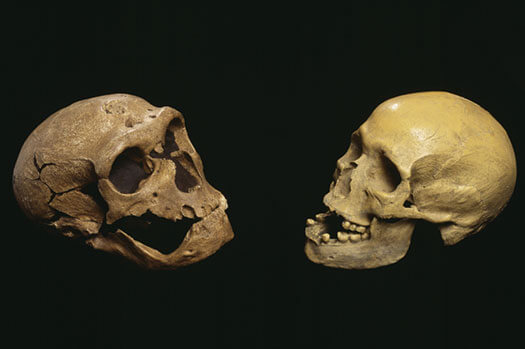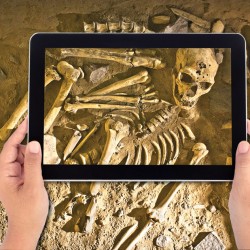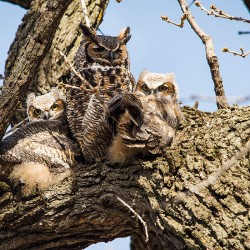Finding Your Inner Neanderthal

Genes from Neanderthals (skull at left) make up about 2 to 3 percent of DNA in humans (skull at right), approximately the same amount as from one great-great-great grandparent. Six students from Professor John Hawks’s introductory anthropology class recently had their DNA tested to sequence and analyze their Neanderthal roots. The results will be revealed in a new Nova documentary. Photo: Pascal Goetgheluck / Science Source.
Modern scientific tools provide clues to an ancient species.
Neanderthals are long extinct, but there’s a surprising amount of their DNA still around — and it’s in each of us.
On average, about 2 to 3 percent of our DNA is made up of Neanderthal genes, which is approximately the same amount as from one great-great-great-grandparent. UW anthropologist John Hawks is working to understand which genes, what they’re doing in us, and why they’ve stuck around for tens of thousands of years.
And no, it’s not just about hairy backs and prominent brow ridges. In fact, some of the most interesting clues right now relate to immunity and metabolism.
The extent of Neanderthal ancestry varies around the world, but not as much as you might think. People of European and Asian descent have remarkably similar percentages — though not necessarily the same sequences — while those with primarily African ancestry tend to have a bit less.
Six undergraduates from Hawks’s Introduction to Biological Anthropology class recently explored this in a project sponsored by the public television series Nova. Selected to represent a range of ethnicities and ancestries, the six submitted DNA samples for sequencing and analysis of their Neanderthal roots, with the results to be revealed in a new Nova documentary.
The project is just one example of how genetic information is now permeating modern culture, from popular media to personalized medicine, Hawks says. As tools improve, potential applications multiply, and costs go down, it’s likely that genetic sequencing will become even more commonplace.
“This is the world that students are going into,” he says. “As an educator, I’m looking for ways to make this relevant and find ways to educate students about what the future holds for them.”
Published in the Winter 2012 issue



Comments
No comments posted yet.